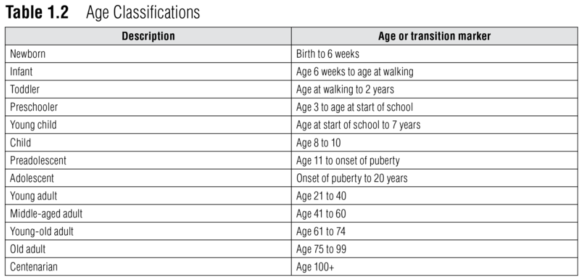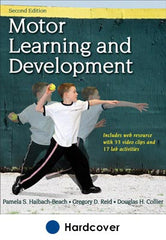Motor Learning
This is an excerpt from Motor Learning and Development 2nd Edition With Web Resource by Pamela Haibach-Beach,Greg Reid & Douglas Collier.
Motor learning is a subdiscipline of motor behavior that examines how people acquire motor skills. Motor learning is a relatively permanent change in the ability to execute a motor skill as a result of practice or experience. This is in contrast to performance, the act of executing a motor skill that results in a temporary, nonpermanent change. One way to conceptualize this difference is to consider the change of state in an egg (Schmidt & Lee, 2014). When an egg is boiled, there is a permanent change in the state of that egg. The egg has irreversibly transformed into a solid. To conceptualize performance, we could make an analogy to water. When temperatures drop below 32 degrees Fahrenheit (0°C), water solidifies to ice. This is not a permanent change, because water will convert back to its original form if temperatures increase again to above 32 degrees Fahrenheit. The permanent change that results from boiling an egg is analogous to the permanent change in the ability to perform a motor skill, or motor learning. The change in water resulting from temperature increases or decreases, on the other hand, is analogous to performance changes because of its lack of permanency.
Now let's return to the definition of motor learning. Recall that motor learning is the process of acquiring the ability to produce skilled actions. The first characteristic of motor learning is that a process is requiredto induce a change in the ability to perform skillfully. A process, in regard to acquiring a skill, is a set of events or occurrences resulting in a change in the state or end product. Dropping temperatures would be the process that causes water to change form. Drills in sport are processes with the goal of improving the capability to perform skillfully. For instance, soccer juggling is a common method (process) to improve ball control in soccer players. A player who tears her anterior cruciate ligament must undergo months of physical therapy (process) to rehabilitate her knee and regain her strength and flexibility. The goal of conducting a process is to increase the strength of this state, be it altering the temperature to change the state of water, or promoting motor learning through practice drills or physical therapy sessions.
Capability implies that skilled behavior may occur if the conditions are favorable. There is certainly no question that Jack Nicklaus acquired the capability to play the game of golf. However, even Nicklaus had his off days, although his off-day skills in golf most likely still far exceeded many, if not all, of our golf skills. Certain variables can prevent optimal performance even when the capability is attained, such as external conditions (e.g., rain, snow, sleet, cold, wind), motivation, wellness, or fatigue.
The second characteristic of motor learning is that it must occur as a direct result of practice. Motor learning is not due to maturation or physiological training. A change that occurs as a result of maturation is a motor development change. For instance, learning to walk is motor development, not motor learning, because it is a motor skill that all humans acquire; in contrast, learning to shoot a basketball requires practice and is due to motor learning.
The third characteristic of motor learning is that it cannot be observed directly. It can only be assumed based on long-term performance changes. Motor learning, like love or success, is a construct. It cannot be seen, but is assumed to have occurred when relatively permanent changes in the capability of skilled behavior are observed through performance changes. Motor learning is assumed to produce positive, irreversible effects in the capability for skilled behavior, meaning that these changes are not temporary, as reflected in the saying It's like learning to ride a bicycle.
Children and adults who are occupational or physical therapy patients may notice that they perform better in the therapy setting than they do at home. To facilitate the transition from the clinic to home and continue the benefits of therapy outside of the facility, therapists often teach patients activities they can practice at home. For example, school occupational therapists help children with fine motor delays improve skills such as writing, typing, and cutting. To continue the improvements when school is not in session or when the therapist is not available, the therapist should encourage young clients to create art projects that require fine motor control, such as drawing, cutting, and painting, and to work on their writing or typing as a form of at-home occupational therapy. Classifications of motor skills are important for both physical educators and health professionals who design and implement motor skill programs, because certain practice designs are more appropriate for particular skill classifications.
Motor Development
Motor development is a subdiscipline of motor behavior that examines the age-related, successive changes that occur over the life span and the processes and factors that affect these changes. Changes that occur during a short period that are not associated with practice or experience, such as a child throwing farther or running faster between the ages of two and three, would likely be due to motor development.
Motor development is assessed according to the product (the outcome of performance) or the process (the underlying mechanisms of change). The amount of weight lifted or the distance a javelin is thrown are examples of movement products, whereas the action that was performed to produce the throw is a movement process. Motor development, however, is not simply change. Motor development must be organized and systematic, such as an infant progressing through the motor milestones of raising the head, to rolling over, to crawling, and then to walking. The changes also need to be successive - that is, they must occur in an uninterrupted order. Motor development, therefore, is systematic and marked by successive changes over time. Changes that occur as a result of practice or experience, however, are due to motor learning, not motor development. For example, if a physical education teacher instructs a student to snap his wrist in a squash swing as opposed to using a solid-arm swing in the tennis stroke, the resultant change would be considered motor learning. A therapist teaching alternative ways to lift objects overhead following a shoulder injury would also be dealing with motor learning rather than motor development.
Development can occur over various time periods, from very long time (phylogeny) to very brief in response to immediate task demands. Phylogeny refers to the evolutionary development of a species, which may take many hundreds, even thousands, of years. Ontogeny refers to development that occurs over the life span of one individual. The focus throughout this book is on ontogenetic development. A third level is local biology, including physiological changes such as respiration. Task demands are imposed on an immediate time scale, which can be as short as minutes or even seconds.
Although laypeople often use the terms growth and development interchangeably, they refer to different things. Physical growth refers to an increase in body size or in individual parts that occurs through maturation. However, the term growth is more inclusive of overall body changes, as defined by development. The process of development is not limited to the changes occurring during infancy and childhood. Development occurs throughout the life span as people continually undergo cognitive, physical, and psychosocial changes regardless of their age.
The term maturation refers to the fixed transitions or order of progressions that enable a person to progress to higher levels of function. Maturation includes internal processes that are unaffected by external factors such as the environment. Of course, aspects of the environment, such as learning experiences, parental influence, and physical surroundings, certainly can alter the timing of developmental transitions. A child who is given a ball during infancy is much more likely to be able to catch and throw at an earlier age than a child who is given only a doll. Not receiving a ball does not prevent the child from learning how to catch and throw, but will delay the development of these skills.
Aging refers to a process or group of processes occurring in living organisms that with the passage of time leads to a loss of adaptability, functional impairment, and eventually death (Spirduso, Francis, & MacRae, 2005). Aging is the progression of life from birth whereby a person matures, and this process continues through physical decline, ending with death. People are often classified by chronological age (see table 1.2) to avoid confusion in defining age groups. For instance, one professional may define a four-year-old as a child, whereas another professional may refer to a four-year-old as a preschooler. The importance of age classifications becomes even more prominent in the upper continuums of life, where age classification discrepancies can be as much as 20 years (i.e., when does old adulthood begin - at age 55, 65, or 75?).

The field of motor development combines biology, the study of the growth and maturation of living organisms, and psychology, the study of human behavior (Clark & Whitall, 1989). However, because the study of motor development must involve living humans, the research tends to focus more on the behavioral aspects and so is more aligned with psychology than with biology. The history of the field of motor development has commonly been divided into four periods: the precursor period, the maturational period, the normative period, and the process-oriented period (Clark & Whitall, 1989).
Learn more about Motor Learning and Development, Second Edition With Web Resource.
More Excerpts From Motor Learning and Development 2nd Edition With Web Resource

Get the latest insights with regular newsletters, plus periodic product information and special insider offers.
JOIN NOW


